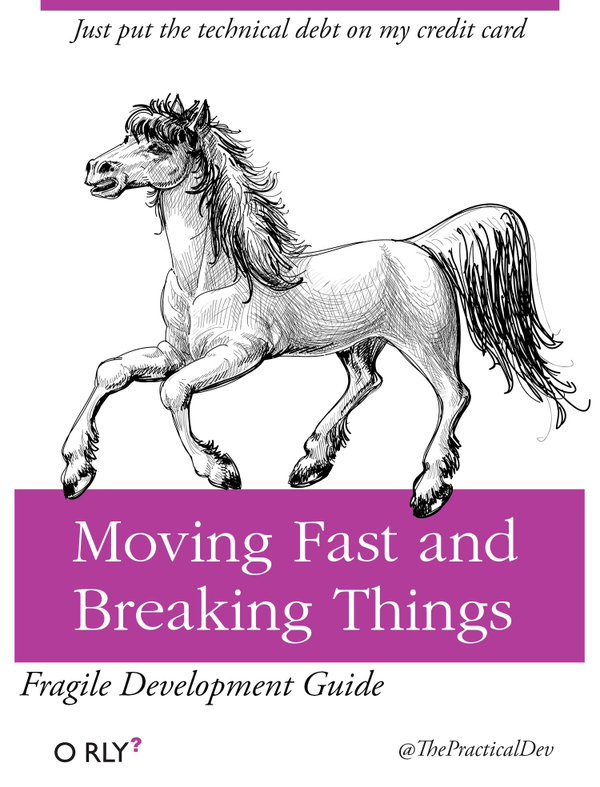
In the ever-evolving landscape of Developia, a realm where code is king and the pace of innovation never ceases, there arose a mantra that echoed through the corridors of startups and tech giants alike: "Moving Fast and Breaking Things." This philosophy, born of a desire to outpace competitors and captivate markets, became the battle cry of many a developer and executive, pushing the boundaries of what was possible at breakneck speed.
At the heart of this narrative is Jamie, a developer whose brilliance was only matched by their ambition. Jamie, like many in Developia, was drawn to the allure of rapid development, the thrill of deploying features at a pace that left onlookers in awe. "Just put the technical debt on my credit card," became Jamie's playful jest, a tongue-in-cheek acknowledgment of the costs deferred in the race to innovate.
Jamie and their team embarked on a project that was to be the pinnacle of their careers, a platform that promised to revolutionize its domain. They adopted the ethos of "Moving Fast and Breaking Things" with zeal, iterating at a speed that blurred the lines between planning and execution. Code was shipped with the urgency of a startup fighting for survival, features rolled out with the fervor of a team convinced of their vision's singularity.
But as the project grew, so too did the ledger of technical debt. Quick fixes and workarounds, once expedient in the heat of development, became shackles that slowed progress and eroded the platform's stability. The metaphorical credit card was maxed out, leaving Jamie and the team to confront the interest accrued on their technical debt.
"Moving Fast and Breaking Things" had propelled them to great heights, but the cost of their ascent began to dawn on them. The platform, though innovative and full of potential, was fraught with issues that stemmed from its hasty construction. Bugs, performance bottlenecks, and security vulnerabilities were but a few of the challenges that emerged from the shadows of their rapid development cycle.
The realization struck Jamie and the team with the force of a runtime exception: speed, though a powerful ally, was also a formidable foe. They understood that the path forward required a new mantra, one that balanced the need for velocity with the wisdom of sustainability. "Moving Thoughtfully and Building Resiliently" became their revised creed, a commitment to tempering their pace with the foresight to address technical debt and fortify their platform's foundation.
This pivot was not without its trials. Refactoring code, improving documentation, and implementing testing frameworks demanded time and resources, commodities that were always in short supply. Yet, with each improvement, the platform grew more stable, more scalable, and more secure. The team found that, paradoxically, by slowing down, they were able to accelerate their progress, building upon a solid foundation that supported rapid iteration without sacrificing quality or stability.
The tale of "Moving Fast and Breaking Things: Just Put the Technical Debt on My Credit Card" became a parable in Developia, a lesson in the perils of unbridled speed and the virtues of mindful development. It served as a reminder that in the realm of technology, the race is not always to the swift but to those who navigate the course with care and consideration.
Jamie's journey, from the exhilarating highs of rapid innovation to the sobering realization of its costs, underscored a fundamental truth in the world of development: that the most enduring successes are often those built not on the sands of haste but on the bedrock of thoughtfulness and resilience.